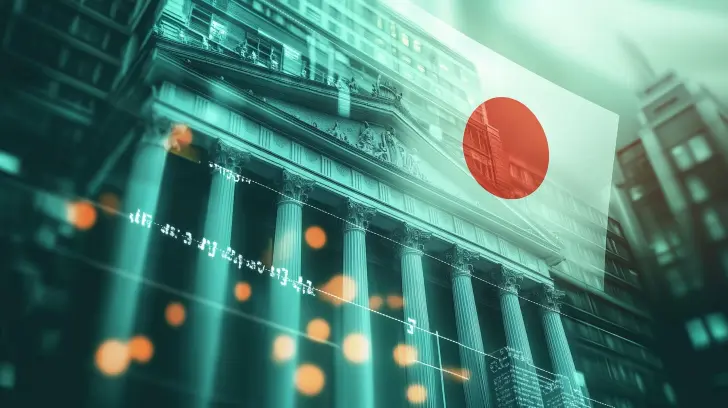The uncertainty surrounding Prime Minister Fumio Kishida’s resignation is likely to cause the Bank of Japan (BOJ) to pause its gradual interest rate hikes, but not to completely halt its plans to increase rates from near-zero levels.
Analysts suggest that the duration of this pause will be influenced by the outcome of the ruling party’s leadership race and the impact of market movements on the political discourse regarding the pace of rate hikes.
Kishida, who had appointed Kazuo Ueda as BOJ governor last year, recently announced that he would not participate in the ruling Liberal Democratic Party’s (LDP) leadership contest in September.
Under Kishida’s administration, the BOJ had closely aligned with government efforts to promote wage growth. Just days before the BOJ’s rate hike in July, Kishida expressed support for the central bank’s policy normalization, seeing it as a step toward transitioning Japan into a growth-driven economy, which signaled his endorsement of moving away from ultra-low interest rates.
Kishida’s departure creates a political vacuum, adding uncertainty to economic policy and complicating the BOJ’s efforts to smoothly exit from its easy monetary stance in coordination with the government.
Most of the leading candidates for LDP leadership have shown support for a gradual increase in Japan’s current ultra-low interest rates, partially to prevent sharp declines in the yen.
Shigeru Ishiba, a frontrunner to succeed Kishida as LDP leader and potentially as prime minister, stated that the BOJ is on the right track with its gradual rate hikes. Other prominent candidates, such as Toshimitsu Motegi and Taro Kono, have also advocated for higher interest rates and a more assertive approach by the BOJ.
The only major figure advocating for aggressive monetary easing is Sanae Takaichi, a candidate with ties to a party faction that supported former Prime Minister Shinzo Abe’s stimulus policies.
“Takaichi might be an exception, but most candidates appear to support the BOJ’s policy normalization. Therefore, it’s unlikely that there will be significant disruption to the bank’s long-term rate hike strategy,” noted veteran BOJ observer Mari Iwashita.
Tensions Between Politics and BOJ
While the BOJ is legally independent from government influence in setting monetary policy, it has historically faced political pressure to use its tools to stimulate the economy. This tension is partly due to the government’s power to appoint BOJ board members, including the governor, which requires parliamentary approval.
With the weak yen adding to household burdens through rising living costs, many politicians are expected to support gradual rate hikes for the time being, analysts suggest. This likely means that the BOJ will continue its course of raising rates, albeit at a slower pace than initially anticipated.
A survey by the Japan Center for Economic Research conducted from July 30 to August 6 showed that many economists expect another rate hike by the end of the year.
“The weak yen has been a significant concern for many lawmakers, leading to less political resistance to rate hikes compared to the past,” said a source familiar with the BOJ’s thinking.
A Pause in the Making
Recent data showing economic recovery in the second quarter, driven by strong consumption, provides justification for further rate hikes, according to analysts.
The BOJ has too much at stake to abandon its carefully planned rollback of the decade-long radical stimulus program. This program ended negative interest rates in March and raised short-term rates to 0.25% from 0-0.1% in July.
The BOJ remains an outlier in global monetary policy, having kept rates ultra-low even as the U.S. and European central banks aggressively hiked rates since 2022 to combat inflation. Now, the BOJ is raising rates while its peers have begun easing, yet it still has some way to go before fully normalizing its policy.
Governor Ueda has indicated that further rate hikes are necessary adjustments to excessive monetary support, rather than a full-scale tightening—an approach he is likely to maintain.
However, the BOJ may choose to wait out the current uncertainties by holding off on further rate hikes at its next policy meeting on September 19-20, which could coincide with the LDP leadership election.
The upcoming U.S. presidential election might also increase market volatility, leading the BOJ to refrain from making moves during its subsequent rate review on October 30-31, according to analysts.
“The BOJ will likely delay further rate hikes until December, after key political events in Japan and the U.S. have passed,” said Toru Suehiro, chief economist at Daiwa Securities.
The BOJ will also need time to build rapport with the new prime minister, who may not be confirmed by parliament until November.
As an academic-turned-governor, Ueda has few connections in political circles, which could make it challenging to communicate effectively with the new administration, some analysts caution.
There is no certainty that political support for rate hikes will persist if the yen’s downtrend reverses.
A sharp rise in the yen, partly triggered by the BOJ’s July rate hike, led to a stock market plunge that forced the central bank to retreat from its more hawkish rhetoric.
“If the weak-yen trend reverses, some politicians might start questioning the necessity of further BOJ rate hikes,” said Naomi Muguruma, chief bond strategist at Mitsubishi UFJ Morgan Stanley Securities.

